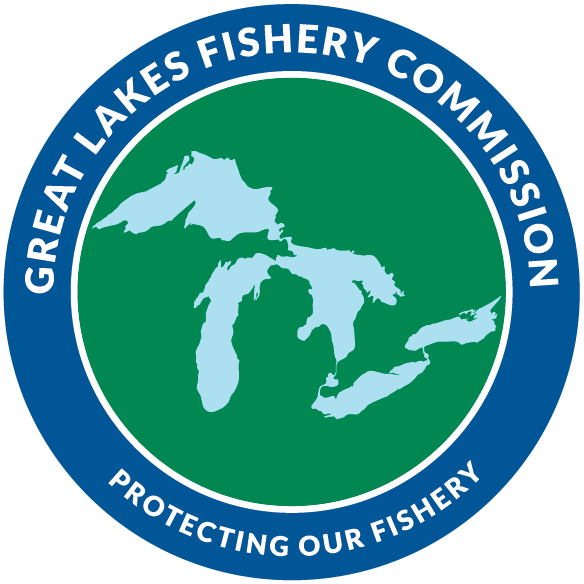Updated 2024-06-24 15:39:30
Lake Huron -> 12.0 Habitat -> Chemical Habitat
Reporting Interval
2018 - 2022
Area
whole lake
Meeting Target?
Meets
Indicator Trend
N/A
Confidence?
low
12.1.2 - Evidence exists that fish habitat is being protected or improved through a coordinated approach that considers fishery value in decisions to act on manageable anthropogenic stressors, including the elimination and reduction of contaminants.
A review of completed and ongoing habitat restoration projects in Lake Huron during the current reporting period (2018-2022) provided clear evidence of coordinated and collaborative efforts to rehabilitate degraded fish habitat. For example, fish spawning reefs were constructed in Saginaw Bay in 2019 to restore Coreyon Reef, which historically was important spawning habitat for Walleye that support a prized recreational fishery [1]. Based on lessons learned from the Coreyon Reef project, additional spawning reef construction is planned for inner Saginaw Bay (in vicinity of the Kawkawlin River outlet into Saginaw Bay and/or near Spoils Island) to support rehabilitation of Lake Trout and Cisco populations and to diversify production of Walleye and Lake Whitefish [2]. Two beneficial use impairments (BUIs) related to fish and wildlife habitat also were removed for the St. Marys River Great Lakes Area of Concern (AOC) in 2019 following a multi-collaborative effort to construct over 50 acres of rapids habitat, a critical fish habitat that was significantly reduced after decades of navigational dredging and alteration of river flows [3]. Lastly, a Canadian-led study that characterized condition of nearshore habitats in Ontario waters of Lake Huron found that most coastal processes were at low or moderate stress levels [4], which suggests current conditions in the basin are favorable for remediation of degraded fish habitat. However, it remains unclear if habitat restoration and enhancement efforts during the reporting period was sufficient to offset concurrent losses in the productive capacity of habitat to support Lake Huron fish communities.
Assessment results from the current reporting period also suggest a positive prognosis for remediation of contaminants. For example, the 2022 Lake Huron Lakewide Action and Management Plan (LAMP) [5] listed all chemical indicators as fair to good for Lake Huron and all as unchanging or improving trends. Multiple targeted contaminant removal projects also were completed within the Saginaw River watershed through efforts of local and regional partners, along with the State of Michigan and federal agencies. Habitat projects to restore coastal and tributary wetlands and to reduce soil and nutrient runoff in Ontario and Michigan were made possible during the reporting period through the partnership of NOAA Regional Habitat Partnerships, the Great Lakes Protection Initiative, the Great Lakes Restoration Initiative, EcoAction Community Funding Program, and other federal, tribal, provincial, and through funding from other federal, tribal, and state funding [5]. The BUI for limiting removal of contaminated dredge materials was removed for the St. Marys River and Spanish Harbour AOCs. Finally, concentrations of PCBs, mercury, and other toxins in Lake Huron lake trout exhibiting an declining trend [6].
However, levels of polyfluoroalkyl substances, more commonly known as PFAS, are an emerging concern [7, 8, 9, 10], and programs have developed to monitor concentrations of PFAS in fish and sediments. Concentrations of PFAS are higher in piscivores than in prey fish and tend to be higher in benthic fish than in pelagic prey fish, which suggests the potential for PFAS to bio-magnify in food webs [11]. Regulatory authorities have yet to establish critical levels of PFAS in water, sediments, or fish. Blooms of Microcystin also still occur in some warm bays of Lake Huron (e.g., Saginaw Bay, Georgian Bay), and research is continuing to identify factors that encourage Microcystin growth and the possible human and food web implications for the toxin produced by these algae.
Methodology
Indicator status was assessed through a review of scientific literature and agency reports.
Other Resources
[1] Michigan Sea Grant. Coreyon: Restoring Fish Spawning Habitat. URL: https://www.michiganseagrant.org/saginawbayreef/coreyon-restoring-fish-spawning-habitat/
[2] Great Lakes Fishery Commission. Regional Habitat Project Saginaw Bay: Inner Saginaw Bay Reef Restoration Project. URL: http://www.glfc.org/rhp-saginaw-bay.php
[3] Michigan Department of Environment, Great Lakes, and Energy (MDEGLE). 2019. Removal recommendation: Degradation of fish and wildlife populations and loss of fish and wildlife habitat beneficial use impairments, St. Mary River Area of Concern. Report to U.S. Environmental Protection Agency. East Lansing, Michigan. URL: https://www.michigan.gov/-/media/Project/Websites/egle/Documents/Programs/WRD/AOC/remrec-stmarys.pdf?rev=468cf18502ba4f0db585deda79b1b4d2.
[4] Environment and Climate Change Canada. 2021. Lake Huron Canadian Nearshore Assessment, 2021 Highlights and Results Report. Gatineau, Quebec. URL: https://www.canada.ca/en/environment-climate-change/services/great-lakes-protection/taking-action-protect/nearshore-waters/lake-huron-nearshore-assessment.html.
[5] Environment and Climate Change Canada and the U.S. Environmental Protection Agency. 2022. Lake Huron Lakewide Action and Management Plan, 2022-2026. URL: https://binational.net/wp-content/uploads/2024/02/2022-2026-Lake-Huron-LAMP.pdf.
[6] Environment and Climate Change Canada and the U.S. Environmental Protection Agency. 2018. Lake Huron Lakewide Action and Management Plan, 2017-2021. URL: https://www.epa.gov/sites/default/files/2018-04/documents/lake-huron-lamp-2017-2021-105pp.pdf.
[7] Furdui, V. I., et al. (2007). Spatial Distribution of Perfluoroalkyl Contaminants in Lake Trout from the Great Lakes. Environmental Science & Technology 41(5): 1554-1559.
[8] Codling, G. et al. (2018). Current and historical concentrations of poly and perfluorinated compounds in sediments of the northern Great Lakes – Superior, Huron, and Michigan. Environmental Pollution 236:373-381.
[9] Michigan Eat Safe Guidelines. URL: https://www.michigan.gov/mdhhs/safety-injury-prev/environmental-health/Topics/eatsafefish/guides.
[10] Guide to Eating Ontario Fish: https://www.ontario.ca/page/guide-eating-ontario-fish.
[11] Ren, J., et al. (2022). Bioaccumulation of polyfluoroalkyl substances in the Lake Huron aquatic food web. Science of the Total Environment 819: 152974.
Contributing Author(s)
- Robin DeBruyne - United States Geological Survey

